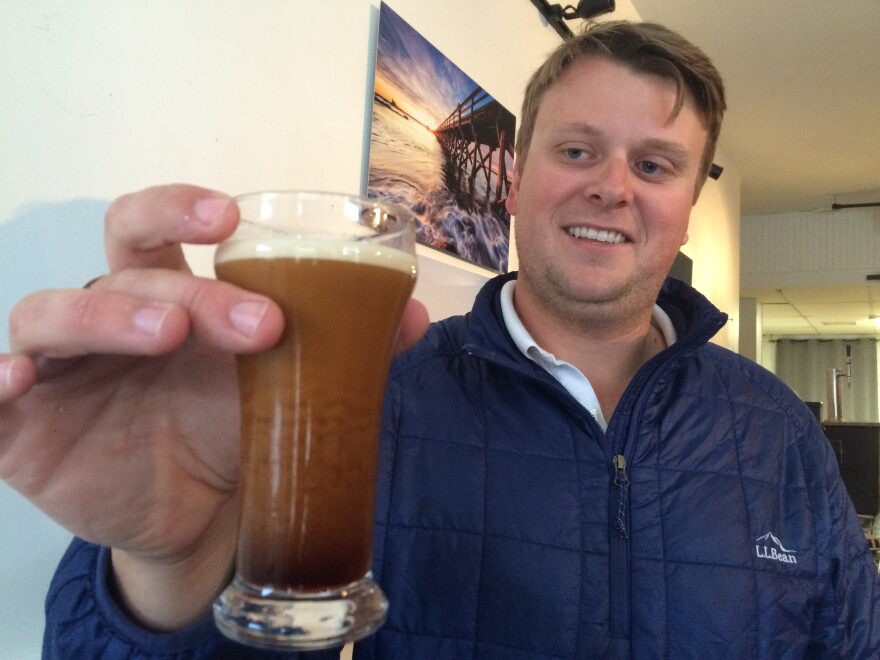Odds are at some point, you've paid good money for a really bad cup of coffee. But a cup of coffee is really just ground up beans plus water plus time. And in cold brewing, you just add a lot more time.
"It’s this movement away from your classic World-War-II Folgers," says Connor Roelke, owner of Nobl Coffee.
Roelke’s operation is way more high-tech than scooping Folgers. He’s brewing big batches of coffee, kegging them like beer, and delivering those kegs around the state.
"We sort of take all of the possible mistakes - or maybe lack of effort - on vendors' parts, and make it all in-house," says Roelke.
Thus, he hopes, he's ensuring that vendor can always give you a perfect cup of coffee, but one that doesn’t look exactly like coffee.
It all starts with beans. Cold-brewed coffee tolerates a coarser grind than grounds filtered for hot coffee. And in part, that's because the grounds steep in cold water for much longer than a pot of hot coffee.
"Our shortest brew time is about 12 hours, and the longest can be as long as 26," says Roelke.
During that time, the coffee sits in a stainless steel fermenter - the same thing you’d see in a brewery. When it's done, Roelke flushes the room-temperature brew through filters with nitrogen into a keg. Once in the keg, he adds a lot more nitrogen, basically maxing out the keg's pressure capacity.
"So I treat nitrogen as our third ingredient," he says.

The nitrogen serves two purposes: it preserves the coffee, and gives it a unique quality when you tap the keg. The nitrogenated coffee pours out of the tap dark and foamy, with a satisfying cascade of coffee filling the bottom of the glass as the fine bubbles settle to the top. And if the idea of drinking a bunch of nitrogen weirds you out, take comfort in knowing the air we breathe is about 78 percent nitrogen.
All these steps – the long brew, the nitrogen – make a coffee that’s flavorful and not acrid, and it pours out like a Guinness, with a head of foam on the top.
"Drinking fresh, nitro-cold-brew off the tap, is almost like drinking a creamy, sweeter version of coffee," says Roelke.
Roelke won third place in a business competition for UNH seniors last year. He says he poured over 400 coffee samples and only one person he served used sugar and milk.
Now Roelke is selling kegs to offices, stores and restaurants, who serve it on tap, cold. He is working on getting it to flow warm out of the tap, too. And he’s signing on lots of new accounts, so this cold brew might already be on its way to a tap near you.









